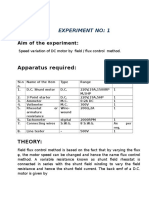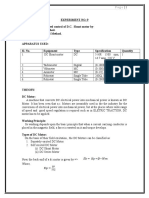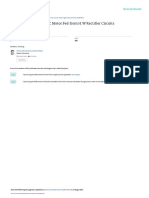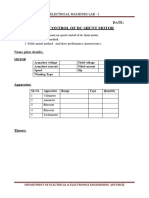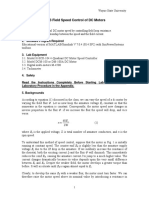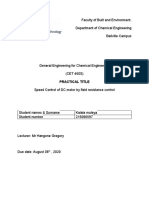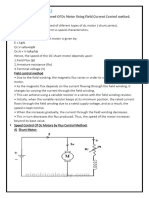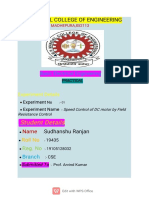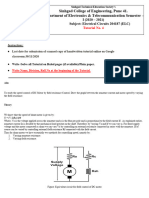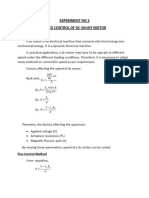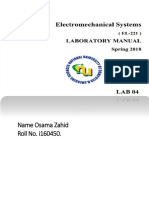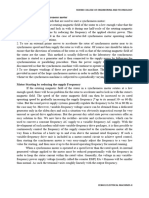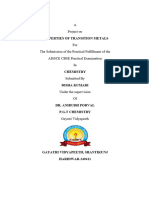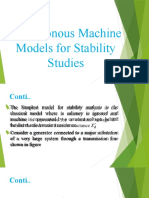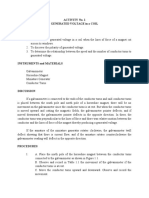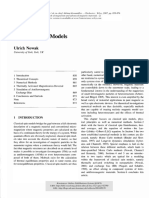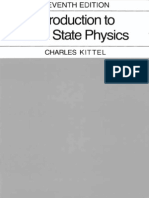0% found this document useful (0 votes)
251 views17 pagesElectrical Engineering Students
Connect the given DC shunt motor to the variableresistance.
2. Switch ON the supply. Note the no load speed.
3. Gradually increase the resistance and note the decrease in speed.
4. Tabulate the readings.
5. Plot a graph between armature resistaice and speed.
6. Draw conclusions.
Concll.lsion
Thus the speed of DC shunt motor can be controlled by varying the armature resistance. The
speed decreases with increase in armature resistance.
Questions
(a) What is the principle of armature control method?
(b) Name the components used in armature control method.
(
Uploaded by
Bina HinglajiyaCopyright
© © All Rights Reserved
We take content rights seriously. If you suspect this is your content, claim it here.
Available Formats
Download as PDF, TXT or read online on Scribd
0% found this document useful (0 votes)
251 views17 pagesElectrical Engineering Students
Connect the given DC shunt motor to the variableresistance.
2. Switch ON the supply. Note the no load speed.
3. Gradually increase the resistance and note the decrease in speed.
4. Tabulate the readings.
5. Plot a graph between armature resistaice and speed.
6. Draw conclusions.
Concll.lsion
Thus the speed of DC shunt motor can be controlled by varying the armature resistance. The
speed decreases with increase in armature resistance.
Questions
(a) What is the principle of armature control method?
(b) Name the components used in armature control method.
(
Uploaded by
Bina HinglajiyaCopyright
© © All Rights Reserved
We take content rights seriously. If you suspect this is your content, claim it here.
Available Formats
Download as PDF, TXT or read online on Scribd
/ 17


